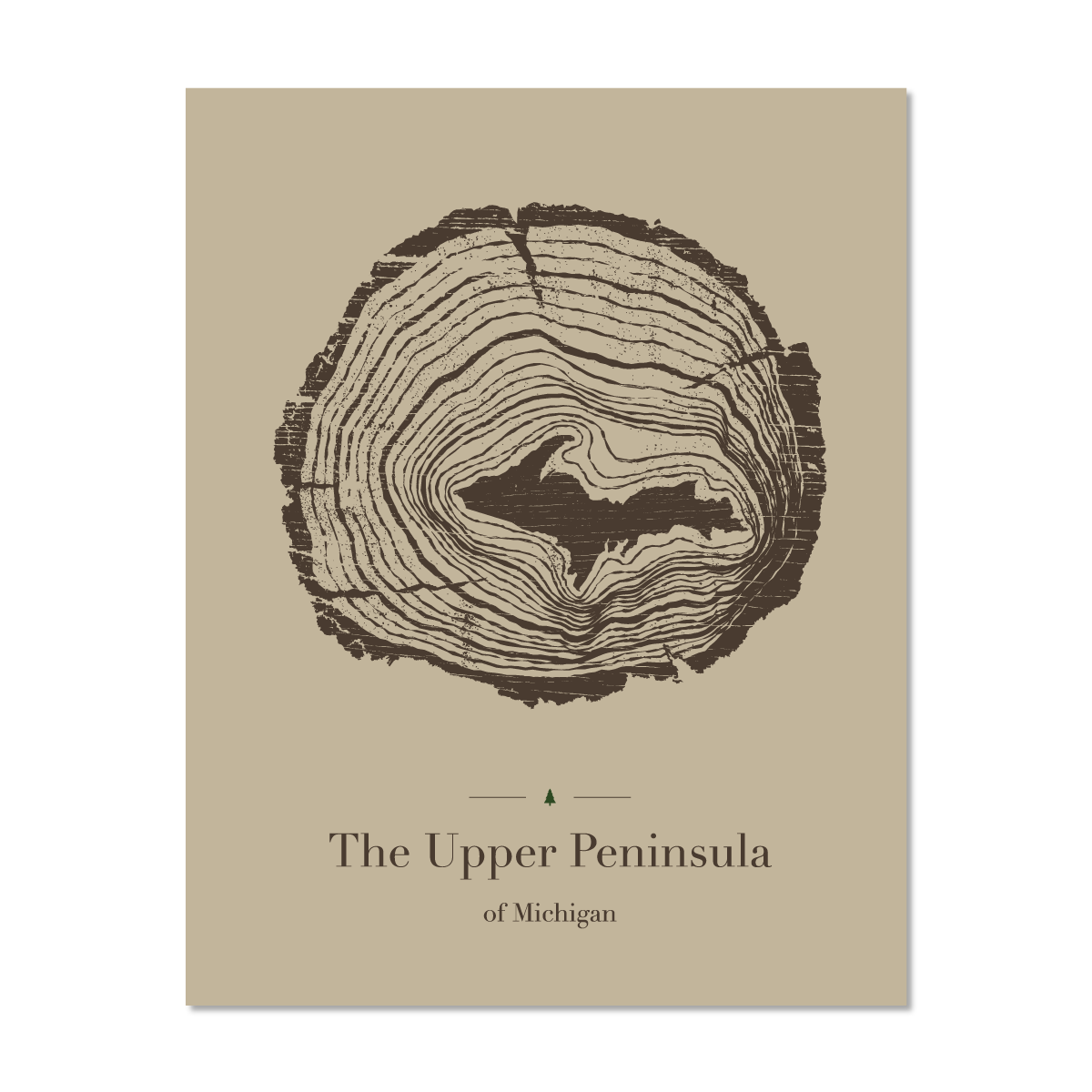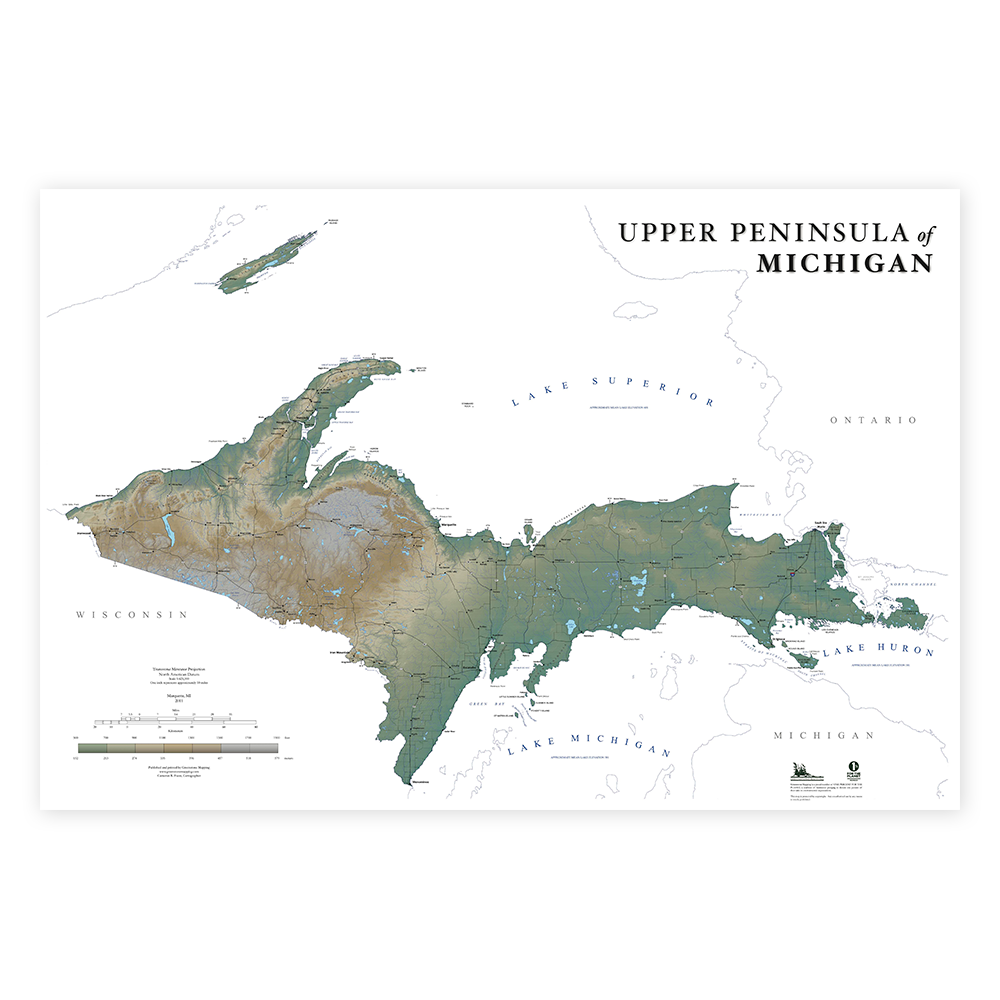Kitch-iti-kipi “The Big Spring”
Legend says that the spring was named Kitch-iti-kipi (pronounced KITCH-i-tee-KI-pee) in memory of a young chieftain by that name who died in the icy waters when his canoe overturned during an attempt to impress a young woman. John I. Bellaire, the man who discovered the spring back in the 1920s, told this story to attract visitors to the site. The legend survives today as a tale that adds to the mysterious appeal of this water site.
As Michigan’s largest spring, Kitch-iti-kipi remains a huge attraction to tourists and residents of the Upper Peninsula alike. Located in Palms Book State Park, off M-149 near Thompson and Manistique, the spring gives visitors an unforgettable experience of pure natural beauty.
This small, hidden body of water up to 400 feet wide has an allure that is otherworldly. The evergreen trees that border the spring are reflected perfectly by the glassy mirror surface of the water.
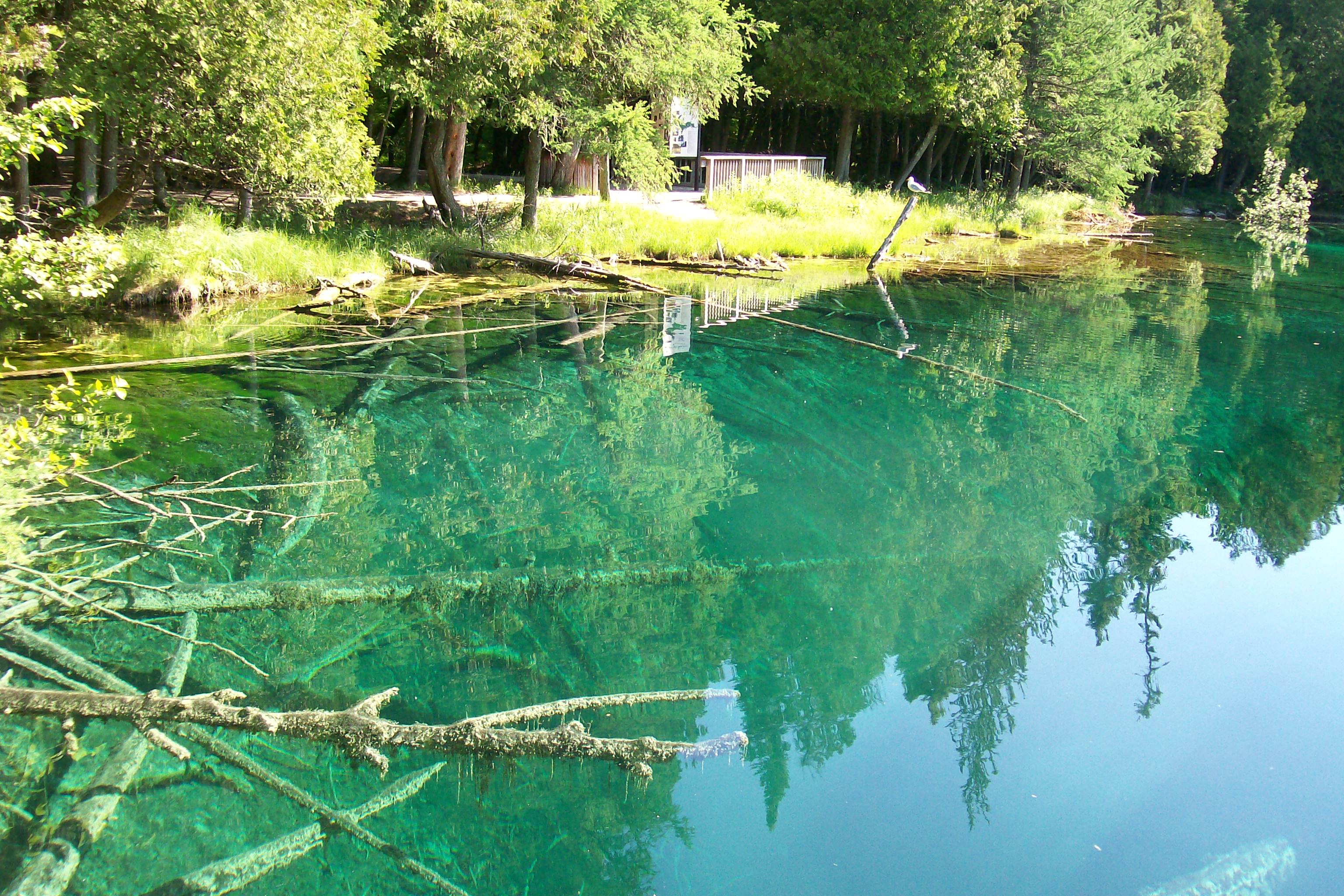
At the junction of the spring water with Indian Lake, the water seems to instantly change from blue to brown in the shallow canal.
It’s hard to say what’s most breathtaking about the spring – the almost unnatural shade of greenblue, the clearness of the water, or the mesmerizing action the springs create on the floor of the pool.
The observation raft glides across the water’s surface, along a cable that spans the entire pool of water, propelled by the manual cranking of a wheel.
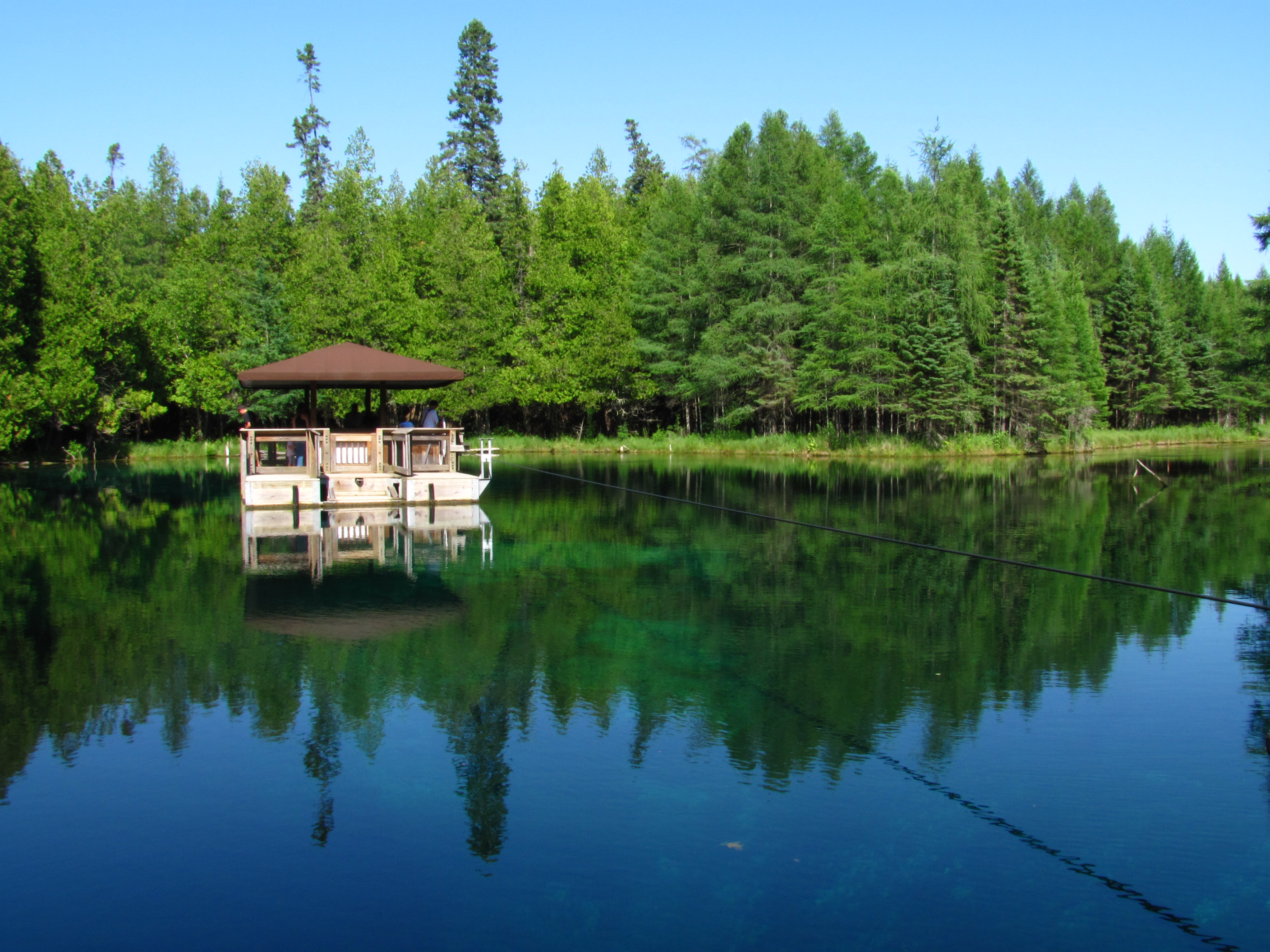
You can see clearly down to the bottom of the pool, 45 feet below. Silt that resembles black and grey confetti shifts slowly, then rapidly, dancing just above the limestone floor.
Well-preserved logs covered in white sulfate deposits appear to be suspended in the water. Some that have sunk and rest along the edges give away the slope of the sinkhole. Large trout seem to just hover in the crystal clear water, an inestimable distance above what appears to be bubbling sand. The trough of the floor bubbles and rumbles constantly from the pressure of 10,000 gallons of water rushing up every minute. The water stays a consistent temperature of 45 degrees year-round
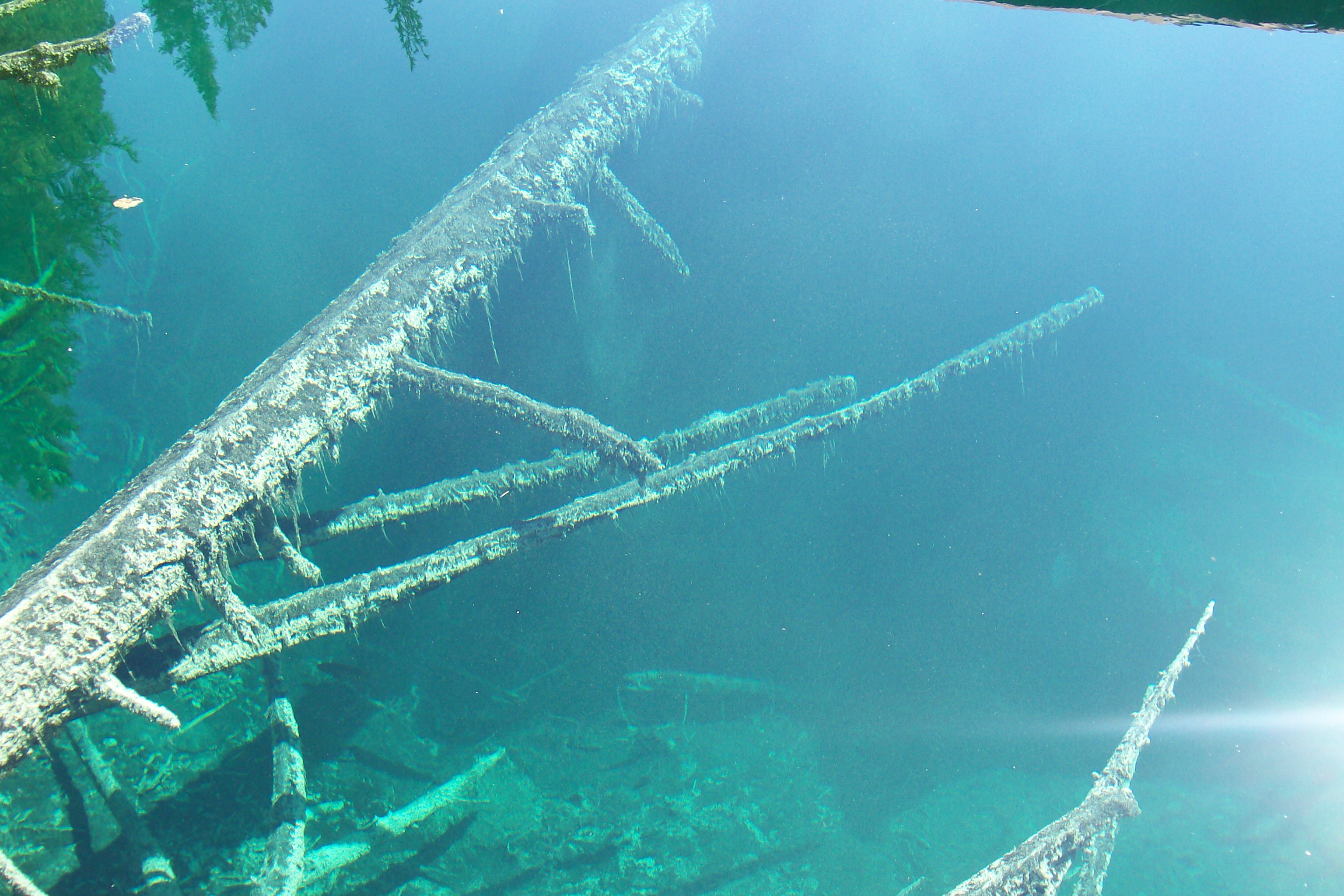

The water continually shifts the sediment into indefinable shapes, making the true bed of the spring indistinguishable because of the constant activity. A still shot almost looks like the aerial view of some tropical coastline.
The more active springs churn the sand, spitting it up in puffs. Despite the constant motion below, you hear nothing but the creaking raft and the conversation aboard it.
Kitch-iti-kipi, the Mirror of Heaven
Between the mirror-image reflections, the fallen trees, the shadowy fish, the numerous springs that line and confound the floor, and the varying consistencies of the sediment on the bottom of the spring – from mossy to sandy to miry – the spring has countless points of interest. With so much to study, the visitor spends more time in suspension above the spring than in motion over the surface.
Have you been to Kitch-iti-Kipi? What impresses you most about it?
This is a guest post from our friend and fellow Yooper Ashley Bovin, she’s from Gladstone and you can follow her on Twitter @ashleyruthless. She also took the photos.

